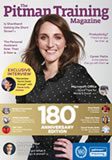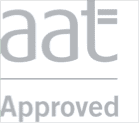
Here are some handy CV tips:
- Ensure there are no spelling or grammatical errors. Don’t let your potential employers pick out any mistakes that could go against you.
- Don’t make it any longer than 2 sides. Keep it brief, you can begin to explain yourself further in your cover letter.
- Make yourself stand out. Try not to use clichés like ‘reading’ ‘socialising’ or ‘exercising’ under your hobbies. You want to catch the eyes of your potential employers so be original!
- Focus on yourself and be honest. Portray yourself as your genuine self. That’s who they’ll want to meet in the interview and, if you got the job, would be working with them. Putting yourself across as honestly and truthfully as possible will go a long way in the grand scheme of things.
- Use a template. There’s no point trying to dive straight in because your CV will be very disjointed and messy. If you follow a template, you can work methodically through it and make it look professional. There are lots of example templates online that you could work from. This way, your potential employers can read it properly and see what you have to offer.
- Don’t create any noticeable employment gaps. Employers will become wary, making it less likely for them to give you an interview. Ensure you fill out all the generic sections of a CV.
Even if you don’t necessarily have the best or thorough experience in work, the great thing about a CV is that the power of words can be used to focus and highlight experiences while still being honest. - Use statistics. Although your CV shouldn’t be too long, it’s good to back up your statements with figures. It shows the extent of your successes and personalises the CV.
- Trigger words. Depending on the job you’re applying for, you should try personalising your CV to the role by using trigger words that will identify you as a good prospect. Use relevant industry terminology that can illustrate your link to the position you’re applying for.
- How does it look? Once all the relevant work experience and personal statements have been added, review your CV and check its visual appearance. Employers usually prefer the simple look with plenty of bullet points that have a lot of space between them. It makes for quick reading and this is good because on average, employers only look at a CV for around 8 seconds. Not very long is it?!
Similarly, it makes it look as if you’ve taken the time and effort to make it look professional which will be appreciated by your potential employers. - Finally, once your CV is ready, remember to keep it updated! Always check back and make necessary changes or additions where you need to. Keep your CV recent and personal, employers appreciate this.

This article first appeared in The Pitman Training Magazine, which features a great deal of articles, hints & tips etc.
You can read the magazine online by clicking this link:
Read The Pitman Training Magazine Online


















